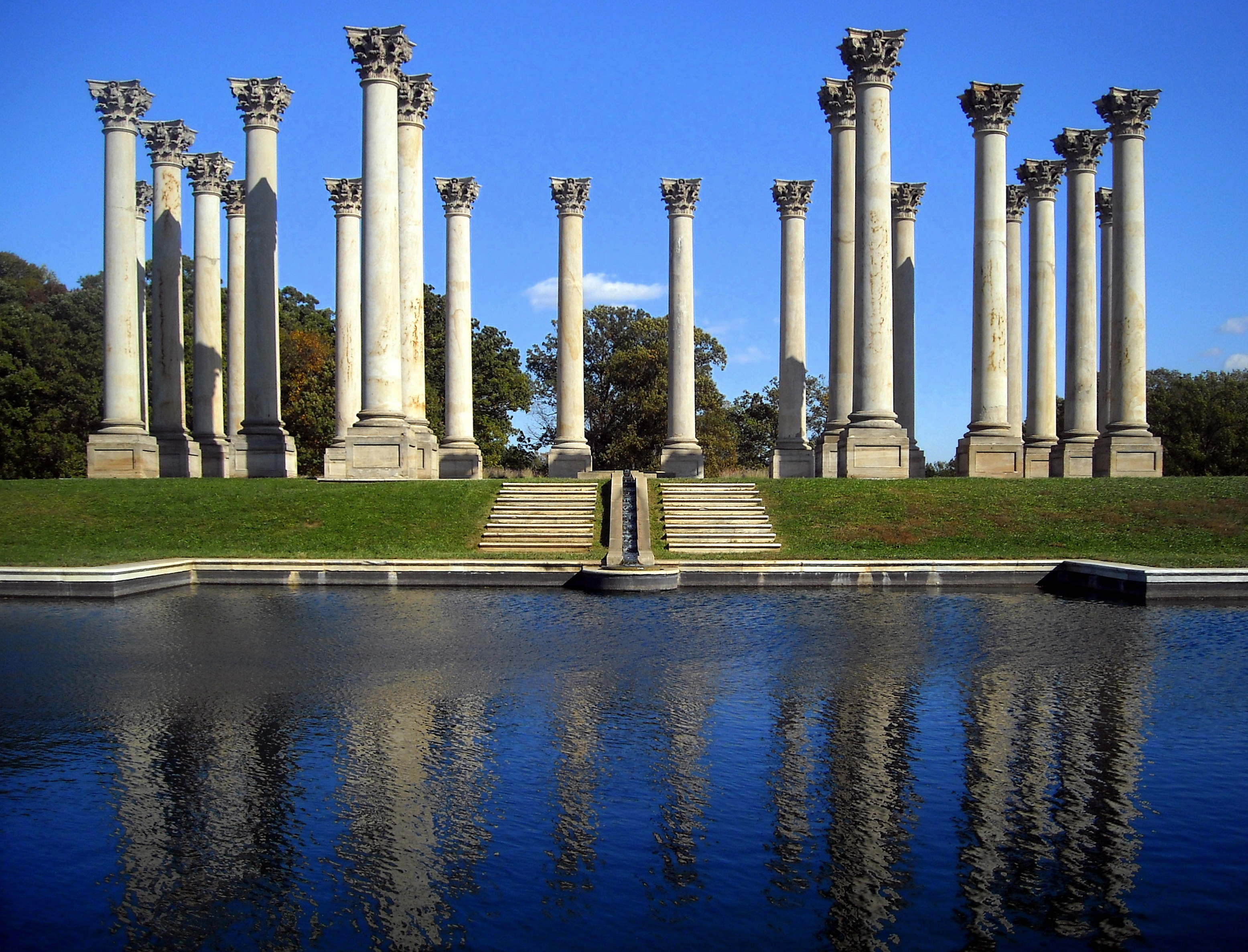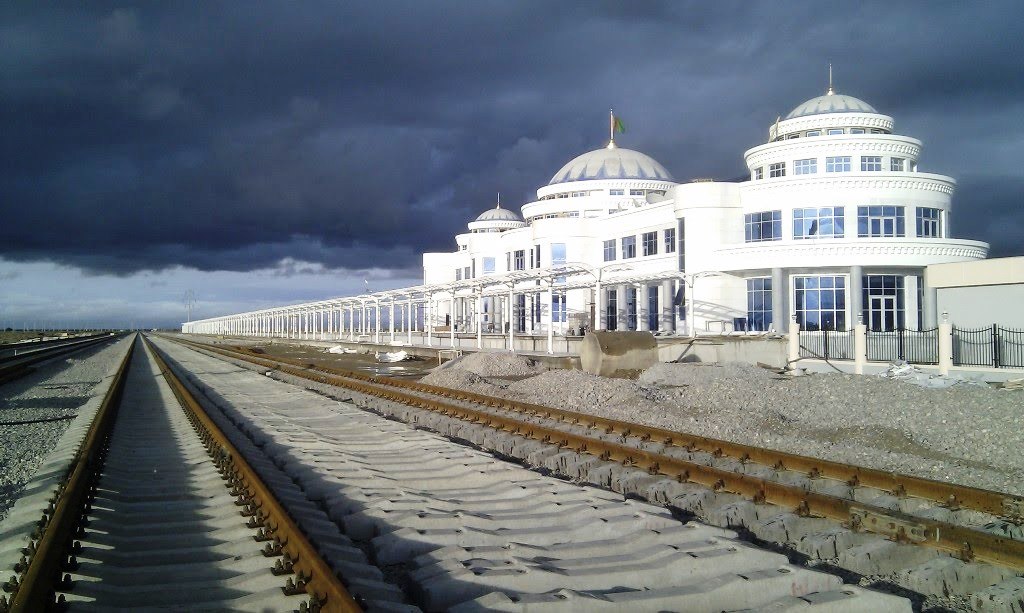|
Altenbeken Viaduct
The Altenbeken Viaduct (german: Altenbekener Viadukt, also known as ''Bekeviadukt'' or ''Großer Viadukt Altenbeken'') is a long and up to high double track limestone railway viaduct. It spans the Beke valley, west of the town of Altenbeken, in the ''Land'' of North Rhine-Westphalia, Germany. The viaduct is Europe's longest limestone bridge, and its construction was one of the earliest significant events in the history of rail transport in Germany. As part of the Hamm–Warburg railway between Paderborn and Altenbeken, it is still in use today. It is also the emblem of Altenbeken, and is depicted, in stylized form, on the coat of arms of the municipality. History The viaduct was built by the Royal Westphalian Railway Company, and was inaugurated on 21 July 1853 by King Frederick William IV. He was the one who coined the phrase ''"I had thought I would find a golden bridge, because so many terrible dollars have been spent"''. The construction and opening of the viaduct an ... [...More Info...] [...Related Items...] OR: [Wikipedia] [Google] [Baidu] |
Hamm–Warburg Railway
The Hamm–Warburg railway is a 131 km long main line railway in the German state of North Rhine-Westphalia. It is part of an east-west line, known as the '' Mid-Germany Connection'' (german: Mitte-Deutschland-Verbindung), and is served by InterCity trains between the Ruhr and Kassel, Erfurt and Berlin. In addition, there are dense freight and regional services. The line was opened between 1850 and 1853 and is one of the oldest railways in Germany. The most important stops are in Soest, Lippstadt and Paderborn. Altenbeken station is also a major point for train connections. In Warburg the line connects with the line to Kassel. Between Hamm and Paderborn the track allows speeds of up to 200 km/h. Route The line from Hamm to Paderborn is relatively flat as it runs through the southern Westphalian Lowland to the east. It runs roughly parallel to the Lippe river and the historic Hellweg, the precursor of highway B 1. In Soest, it is joined by the line from Hagen. Fr ... [...More Info...] [...Related Items...] OR: [Wikipedia] [Google] [Baidu] |
Monument
A monument is a type of structure that was explicitly created to commemorate a person or event, or which has become relevant to a social group as a part of their remembrance of historic times or cultural heritage, due to its artistic, historical, political, technical or architectural importance. Some of the first monuments were dolmens or menhirs, megalithic constructions built for religious or funerary purposes. Examples of monuments include statues, (war) memorials, historical buildings, archaeological sites, and cultural assets. If there is a public interest in its preservation, a monument can for example be listed as a UNESCO World Heritage Site. Etymology It is believed that the origin of the word "monument" comes from the Greek ''mnemosynon'' and the Latin ''moneo'', ''monere'', which means 'to remind', 'to advise' or 'to warn', however, it is also believed that the word monument originates from an Albanian word 'mani men' which in Albanian language means 'remem ... [...More Info...] [...Related Items...] OR: [Wikipedia] [Google] [Baidu] |
Bielefeld
Bielefeld () is a city in the Ostwestfalen-Lippe Region in the north-east of North Rhine-Westphalia, Germany. With a population of 341,755, it is also the most populous city in the administrative region ('' Regierungsbezirk'') of Detmold and the 18th largest city in Germany. The historical centre of the city is situated north of the Teutoburg Forest line of hills, but modern Bielefeld also incorporates boroughs on the opposite side and on the hills. The city is situated on the ', a hiking trail which runs for 156 km along the length of the Teutoburg Forest. Bielefeld is home to a significant number of internationally operating companies, including Dr. Oetker, Gildemeister and Schüco. It has a university and several technical colleges (''Fachhochschulen''). Bielefeld is also famous for the Bethel Institution, and for the Bielefeld conspiracy, which satirises conspiracy theories by claiming that Bielefeld does not exist. This concept has been used in the town's m ... [...More Info...] [...Related Items...] OR: [Wikipedia] [Google] [Baidu] |
Column
A column or pillar in architecture and structural engineering is a structural element that transmits, through compression, the weight of the structure above to other structural elements below. In other words, a column is a compression member. The term ''column'' applies especially to a large round support (the shaft of the column) with a capital and a base or pedestal, which is made of stone, or appearing to be so. A small wooden or metal support is typically called a '' post''. Supports with a rectangular or other non-round section are usually called '' piers''. For the purpose of wind or earthquake engineering, columns may be designed to resist lateral forces. Other compression members are often termed "columns" because of the similar stress conditions. Columns are frequently used to support beams or arches on which the upper parts of walls or ceilings rest. In architecture, "column" refers to such a structural element that also has certain proportional and decorative f ... [...More Info...] [...Related Items...] OR: [Wikipedia] [Google] [Baidu] |
World War II
World War II or the Second World War, often abbreviated as WWII or WW2, was a world war that lasted from 1939 to 1945. It involved the World War II by country, vast majority of the world's countries—including all of the great powers—forming two opposing military alliances: the Allies of World War II, Allies and the Axis powers. World War II was a total war that directly involved more than 100 million Military personnel, personnel from more than 30 countries. The major participants in the war threw their entire economic, industrial, and scientific capabilities behind the war effort, blurring the distinction between civilian and military resources. Air warfare of World War II, Aircraft played a major role in the conflict, enabling the strategic bombing of population centres and deploying the Atomic bombings of Hiroshima and Nagasaki, only two nuclear weapons ever used in war. World War II was by far the List of wars by death toll, deadliest conflict in hu ... [...More Info...] [...Related Items...] OR: [Wikipedia] [Google] [Baidu] |
Railway Town
A railway town, or railroad town, is a settlement that originated or was greatly developed because of a railway station or junction at its site. North America During the construction of the First transcontinental railroad in the 1860s, temporary, " Hell on wheels" towns, made mostly of canvas tents, accompanied the Union Pacific Railroad as construction headed west. Most faded away but some became permanent settlements. In the 1870s successive boomtowns sprung up in Kansas, each prospering for a year or two as a railhead, and withering when the rail line extended further west and created a new endpoint for the Chisholm Trail. Becoming rail hubs made Chicago and Los Angeles grow from small towns to large cities. Sayre, Pennsylvania and Atlanta, Georgia were among the American company towns created by railroads in places where no settlement already existed. In western Canada, railway towns became associated with brothels and prostitution, and concerned railway companies s ... [...More Info...] [...Related Items...] OR: [Wikipedia] [Google] [Baidu] |
Egge Hills
The Egge Hills (german: Eggegebirge, ), or just the Egge (''die Egge'') is a range of forested hills, up to , in the east of the German state of North Rhine-Westphalia. Geography The Egge extends from the southern tip of the Teutoburg Forest range near Horn-Bad Meinberg and Steinheim, Westphalia southwards to the northern parts of the Sauerland The Sauerland () is a rural, hilly area spreading across most of the south-eastern part of North Rhine-Westphalia, in parts heavily forested and, apart from the major valleys, sparsely inhabited. The Sauerland is the largest tourist region in ... near Marsberg. Its highest point is the ''Preußischer Velmerstot'' at an altitude of 468m. It is part of the Lower Saxon Hills and one of the two main lines of hills within the Teutoburg Forest / Egge Hills Nature Park. It also constitutes part of the watershed between the rivers Rhine and Weser. References External links Hill ranges of Germany Mountains and hills of ... [...More Info...] [...Related Items...] OR: [Wikipedia] [Google] [Baidu] |
Tunnel
A tunnel is an underground passageway, dug through surrounding soil, earth or rock, and enclosed except for the entrance and exit, commonly at each end. A pipeline is not a tunnel, though some recent tunnels have used immersed tube construction techniques rather than traditional tunnel boring methods. A tunnel may be for foot or vehicular road traffic, for rail traffic, or for a canal. The central portions of a rapid transit network are usually in the tunnel. Some tunnels are used as sewers or aqueducts to supply water for consumption or for hydroelectric stations. Utility tunnels are used for routing steam, chilled water, electrical power or telecommunication cables, as well as connecting buildings for convenient passage of people and equipment. Secret tunnels are built for military purposes, or by civilians for smuggling of weapons, contraband, or people. Special tunnels, such as wildlife crossings, are built to allow wildlife to cross human-made barriers safe ... [...More Info...] [...Related Items...] OR: [Wikipedia] [Google] [Baidu] |
Rail Yard
A rail yard, railway yard, railroad yard (US) or simply yard, is a series of tracks in a rail network for storing, sorting, or loading and unloading rail vehicles and locomotives. Yards have many tracks in parallel for keeping rolling stock or unused locomotives stored off the main line, so that they do not obstruct the flow of traffic. Cars or wagons are moved around by specially designed yard switchers (US) or shunters, a type of locomotive. Cars or wagons in a yard may be sorted by numerous categories, including railway company, loaded or unloaded, destination, car type, or whether they need repairs. Yards are normally built where there is a need to store rail vehicles while they are not being loaded or unloaded, or are waiting to be assembled into trains. Large yards may have a tower to control operations. Many yards are located at strategic points on a main line. Main-line yards are often composed of an up yard and a down yard, linked to the associated direction of tr ... [...More Info...] [...Related Items...] OR: [Wikipedia] [Google] [Baidu] |
Altenbeken Station
Altenbeken station is in the municipality of Altenbeken in the Paderborn district of the German state of North Rhine-Westphalia. The station has a great importance as a hub for local and long-distance transport due to its location on the line from the Ruhr area to Warburg and Kassel, as well as to Holzminden–Kreiensen, Hanover and Herford. Its importance has increased recently because of the lack of Intercity-Express/Intercity services on the so-called Mid-Germany Railway (german: Mitte-Deutschland-Verbindung). History The railway from Paderborn to Warburg opened in 1853, originally without a station at Altenbeken. The station was built with the branch line to Holzminden opened on 1 October 1864, the station building was opened in 1865. During the time of the Deutsche Reichsbahn (1920–1949), the station was part of the territory of the Directorate of Kassel (''Reichsbahndirektion Kassel'') and under Deutsche Bundesbahn it continued to be under the Directorate of Kassel, unt ... [...More Info...] [...Related Items...] OR: [Wikipedia] [Google] [Baidu] |







.jpg)
